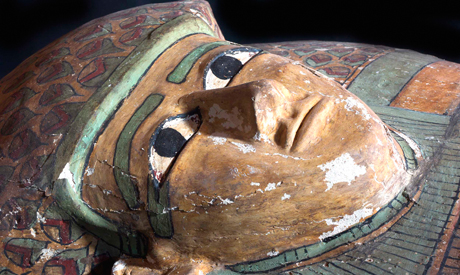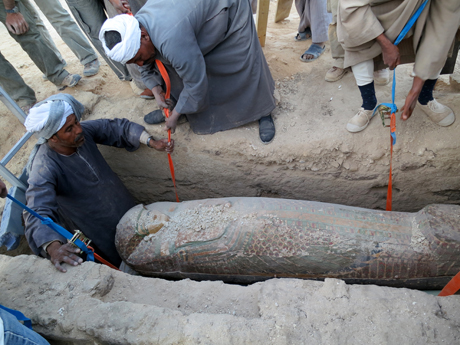A 17th dynasty painted sarcophagus belonging to a top governmental official was unearthed at Draa Abul-Naga necropolis on Luxor’s west bank

A Spanish-Egyptian archeological team working on Luxor’s west bank has discovered a rare wooden human-shaped sarcophagus from the 17th dynasty.
The find came during routine excavation work at the tomb of Djehuty, treasure holder for Queen Hatshepsut, at Dra Abul-Naga necropolis.
The sarcophagus is important for the detailed depictions of bird feather shapes and sizes painted on its lid, motifs that have earned it the title of Feathers Sarcophagi, according to Egypt’s antiquities minister Mohamed Ibrahim. The 2 metre long, 42 cm tall sarcophagus is in very good condition, Ibrahim said, and also engraved with titles of the deceased, which archeologists have not yet been able to identify.
Studies reveal that the sarcophagus belongs to a top governmental official from the 17th dynasty, whose mummy was enclosed inside, said Ibrahim.

The archeological team found two other burials at the site, which were both empty. It is believed that they were robbed in antiquity. The Spanish mission began excavation work at Djehuty’s tomb 13 years ago, when many artefacts from New Kingdom dynasties were found.
Last year the team unearthed a sarcophagus of a 17th dynasty child, along with a number of clay pots and ushabti figurines wrapped in linen. Excavation at the site remains in full swing, said José Galan, head of the Spanish team.
Original article: www.ahram.org.eg